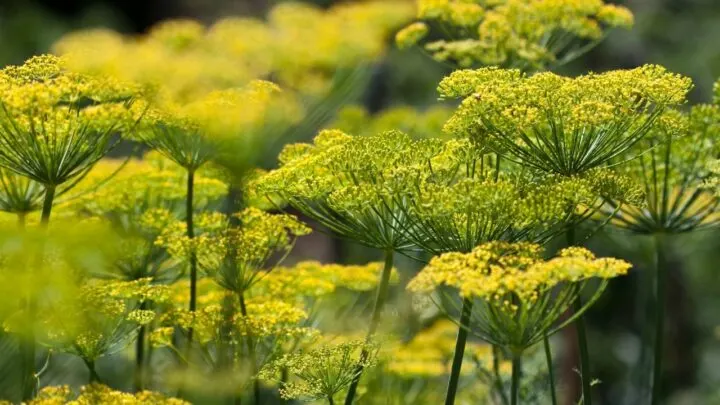How to Trim Dill?
The main ingredient in many Eurasian dishes, Dill or Anethum graveolens (botanical name) is the only species in the plant family Apiaceae or Umbelliferae according to Winsconsin University.
Dill is grown mainly for its leaves which are used both fresh and dried.
Growing up to approximately two feet tall (60cm), dill is a somewhat delicate plant with hollow stems and fine leaves that range from four to eight inches long.
If left to seed, rather than harvested, Dill eventually produces small yellow or white flowers that measure between one inch to three and a half inches (2.5-9cm).
Read on below to learn all about properly trimming dill!
Table of Contents
How to Trim Dill?
To trim dill you can remove entire branches as well as a ⅓ and ⅔ of additional branches. In addition pinch of small amounts of leaves that you can use directly for cooking. The pruning technique involves pruning ⅔ to ¾ of the entire plant using gardening shears. Lastly, the majority of the plant can be trimmed back almost to the ground and hung to dry at the end of the year.
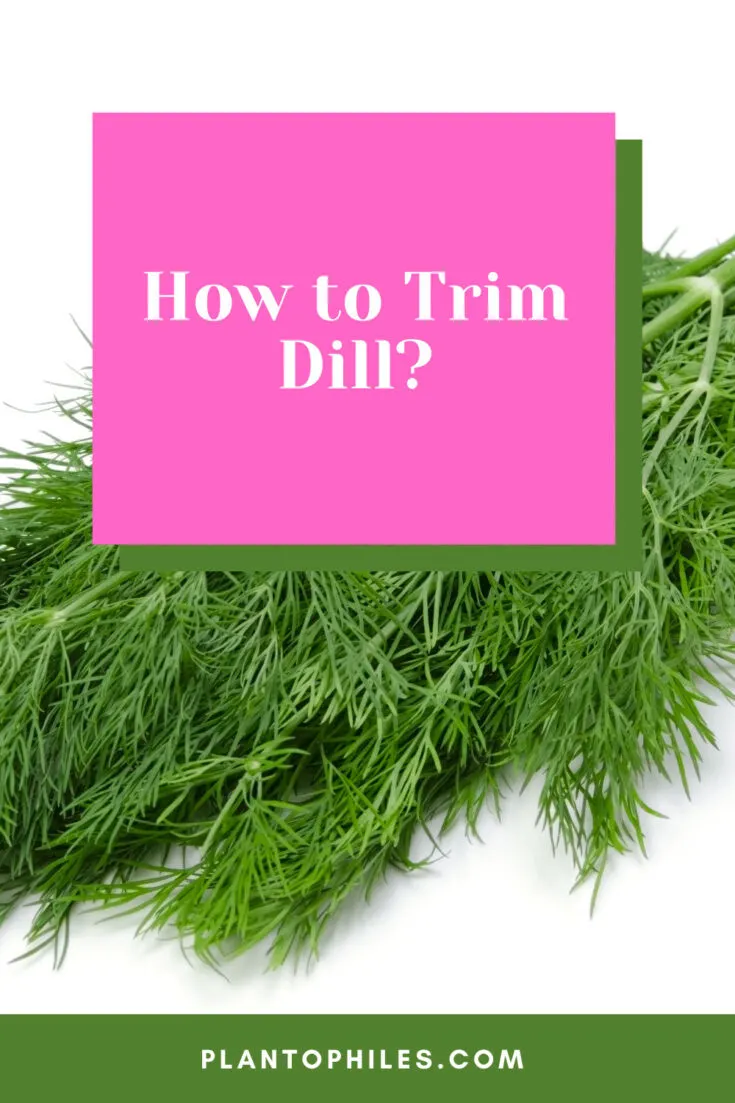
How to Trim Dill?
Method 1. To Trim Dill – Snipping
If you are looking for the best method for trimming Dill and shaping it at the same time, snipping entire branches is the best technique for you.
Using this Dill trimming technique, you procure enough herb to use fresh as well as to dry some.
In addition to snipping off entire branches back to the main stalk, snip between a ⅓ and ⅔ of additional branches to help shape the plant how you’d like it to grow back.
Keep in mind that wherever you snip it, it will grow back even thicker than before.
Method 2. To Trim Dill – Pinching
For those who are in need of just enough fresh Dill for cooking, trimming is best done by pinching off small amounts of the leaves.
Simply take ahold of the end of the branch, firmly grasp the tip of the leaves between finger and thumb, and carefully snap it off.
Pinching Dill is the easiest trimming method, and it also yields the least. That said, it also barely slows down the plant’s overall growth and development.
Further, it doesn’t have the same level of effect as snipping (causing the trimmed areas to grow back bushier).
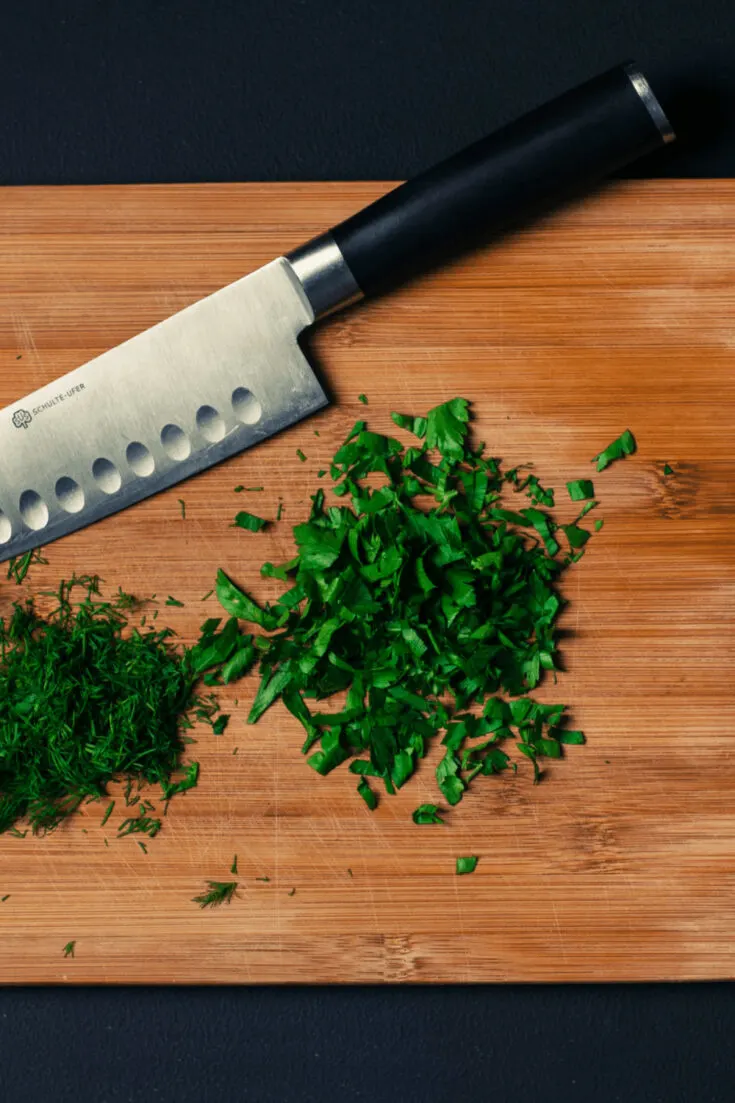
Pinch Dill leaves that you can use directly for cooking
Method 3. To Trim Dill – Pruning
When it comes to trimming enough dill at one time to last the entire year, pruning is the only way to go.
Using this method, simply take a pair of pruners or gardening shears and trim off ⅔ to ¾ of the entire plant.
Once you’ve trimmed the majority of the plant off, it’s time to dry it.
Do so by tying a string around the base of the severed branches and hanging it somewhere with good airflow but low moisture.
If desired, pinch a bit of Dill off and set to the side for some fresh herb in the kitchen.
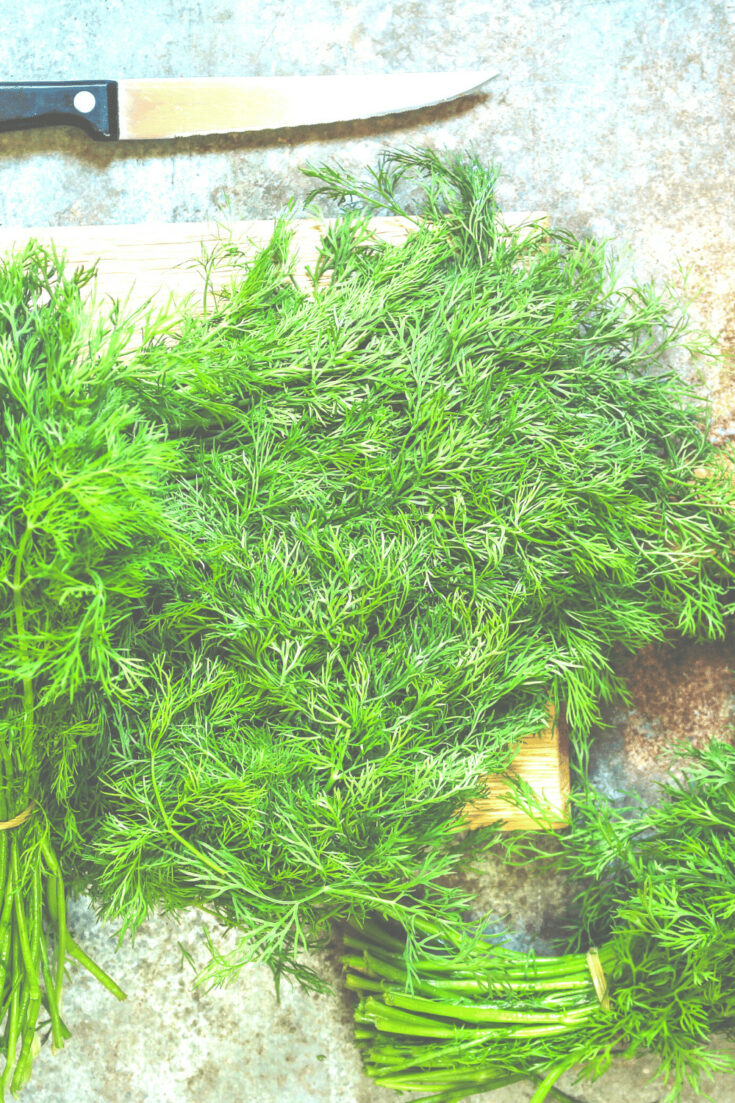
You can prune ⅔ to ¾ of the entire Dill using gardening shears
Dill Trimming Tips
Pick and Pinch Tips as Needed
When you’re cooking up one of your favorite dishes that require Dill, it only takes a moment to step outside and pick a nice piece to pinch off. This is the best way to spice up your meal with homegrown Dill.
If you happen to pinch off more than you end up using, it’s no problem. There is no need to let it go to waste. Simply stick it in a jar with a bit of water in the bottom and place it in the fridge. It will stay fresh for up to two weeks.
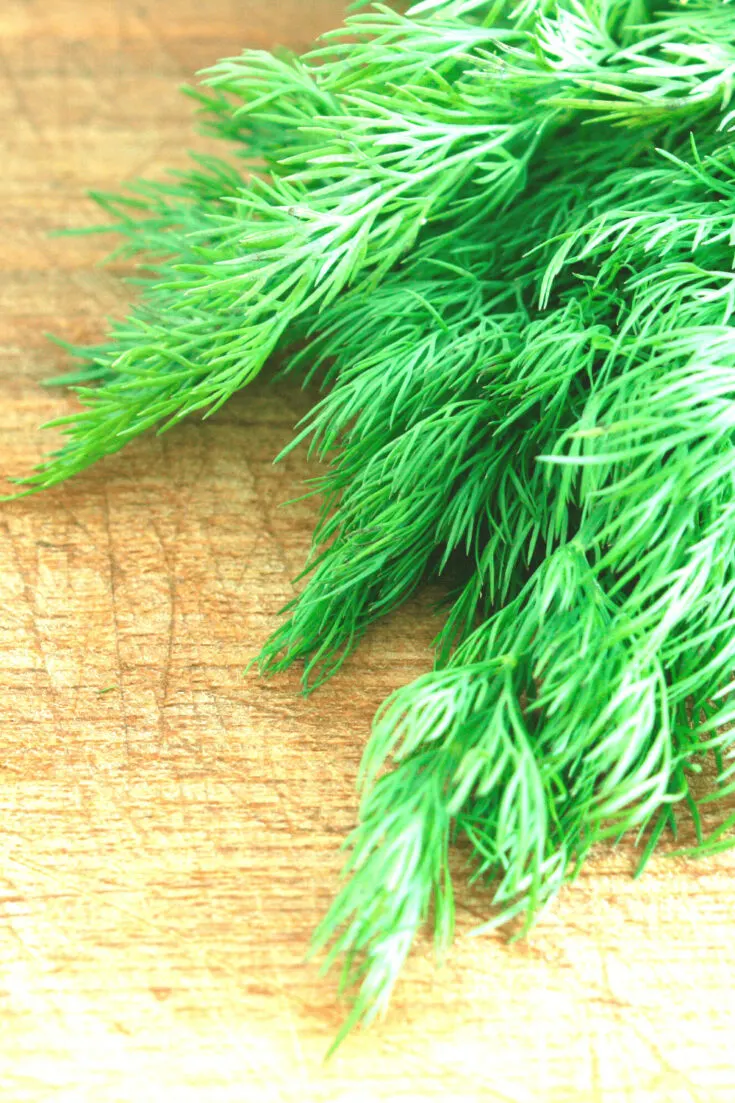
You can prune Dill almost to the ground and hang it at the end of the year
Trim Enough of the Plant to Encourage new Growth
If you want Dill bushes, all you need to do is snip enough of the plant to send it the signal to start growing out again.
Removing at least ⅓ of the majority of a Dill plant’s branches causes it to start re-growing more profusely than before.
The best way do so is to make 45-degree cuts with a pair of sharp hand snips or gardening scissors.
The thinner and sharper the blade, the more surgical the cut. Dull blades may damage the stems and cause them to dry up rather than grow back.
Avoid Pulling and Yanking
Whatever you do while trimming your Dill, avoid yanking or pulling the plant to snap branches off. As with using dull tools to trim your plant, pulling and yanking is liable to cause more damage than it is to do good.
When you snap branches off, you’re not making a clean cut.
That means you’re not providing optimal conditions for regrowth to occur.
However, if you don’t care if your Dill lives or dies after you trim off all the herb you want or need, then by all means snap away to your hearts’ content!
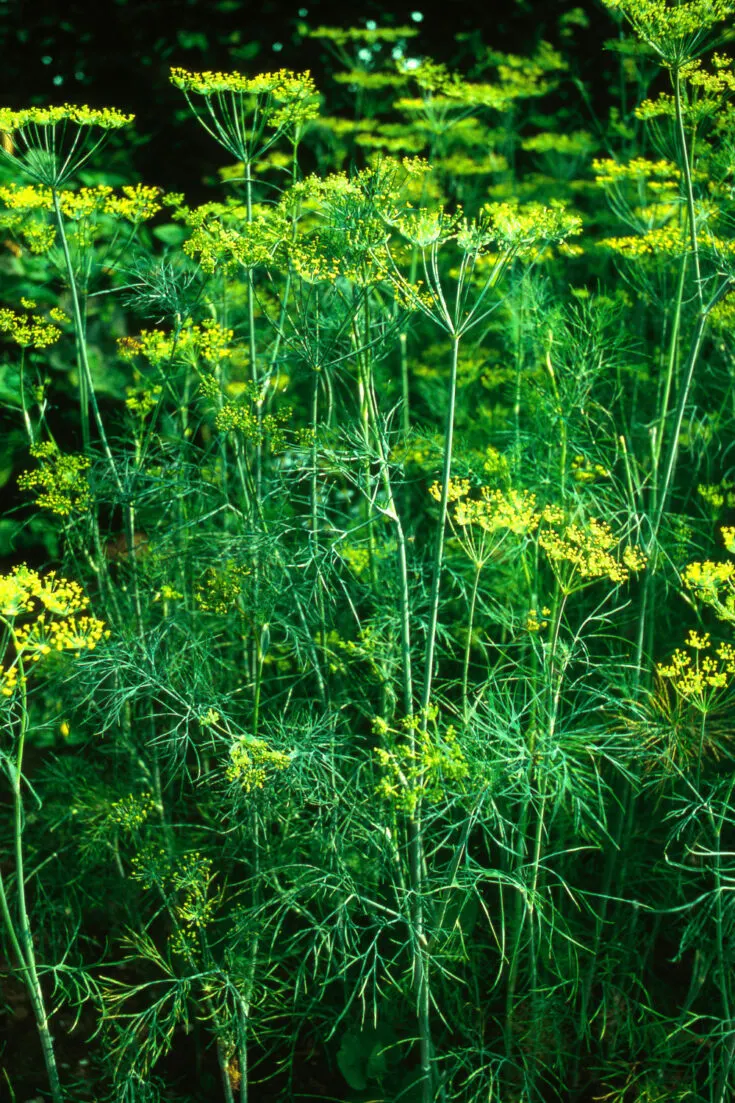
Avoid pulling and yanking as this will do damage to the plant
Frequently Asked Questions About How To Trim Dill
How do you trim Dill without damaging it?
The best way to trim Dill without damaging or killing the plant is by carefully snipping off stems and leaves where they grow out from the main stem. Also, always use the sharpest scissors or snippers possible to avoid accidental damage or cause stunted growth.
How can I trim Dill to make it bushy?
If you want to grow a bushier than usual Dill plant, simply snip off the top sections of the plant. Removing the tops of branches and leaves typically causes new growth to shoot up from the bottom and out from the sides, resulting in a bush-like plant.
How do I know when Dill is ready to trim?
Once a Dill plant reaches 12 inches to 16 inches tall, and is showing plenty of green branches topped with fine leaves, it is ready for trimming. That said, if you prefer to harvest and dry Dill just one time per year, wait until it flowers and the seeds turn brown.

Daniel has been a plant enthusiast for over 20 years. He owns hundreds of houseplants and prepares for the chili growing seasons yearly with great anticipation. His favorite plants are plant species in the Araceae family, such as Monstera, Philodendron, and Anthurium. He also loves gardening and is growing hot peppers, tomatoes, and many more vegetables.

